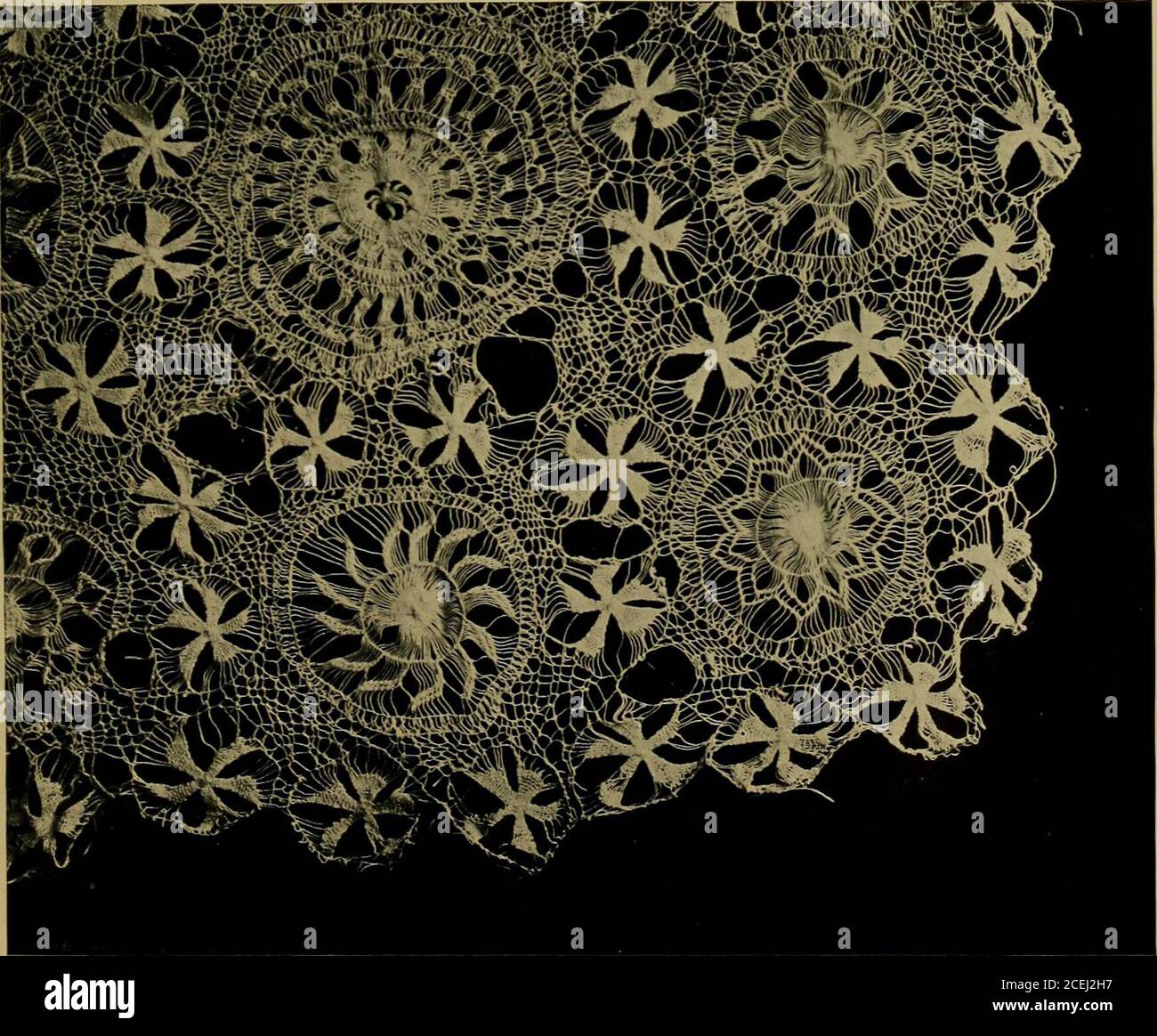. History of lace. Spanish.—Pillow made nineteenth century. Peseau of two threads twistedand crossed. Slightly reduced. Plate XXXV. Paraguay. Nanduti.—End of nineteenth century. Reduced rather over half. Photos by A. Dryden from private collections. To face page 108. 109 CHAPTER VII. FLANDEES. I For lace, let Flanders bear away the belle. —Sir C. Hanbnry Williams. In French embroidery and in Flanders laceIll spend the income of a treasurers place. —The Man of Taste, Rev. W. Bramstone. Flanders and Italy together dispute the invention of lace.In many towns of the Low Countries are pictures of t

Image details
Contributor:
Reading Room 2020 / Alamy Stock PhotoImage ID:
2CEJ2H7File size:
7.1 MB (545.3 KB Compressed download)Releases:
Model - no | Property - noDo I need a release?Dimensions:
1739 x 1437 px | 29.4 x 24.3 cm | 11.6 x 9.6 inches | 150dpiMore information:
This image is a public domain image, which means either that copyright has expired in the image or the copyright holder has waived their copyright. Alamy charges you a fee for access to the high resolution copy of the image.
This image could have imperfections as it’s either historical or reportage.
. History of lace. Spanish.—Pillow made nineteenth century. Peseau of two threads twistedand crossed. Slightly reduced. Plate XXXV. Paraguay. Nanduti.—End of nineteenth century. Reduced rather over half. Photos by A. Dryden from private collections. To face page 108. 109 CHAPTER VII. FLANDEES. I For lace, let Flanders bear away the belle. —Sir C. Hanbnry Williams. In French embroidery and in Flanders laceIll spend the income of a treasurers place. —The Man of Taste, Rev. W. Bramstone. Flanders and Italy together dispute the invention of lace.In many towns of the Low Countries are pictures of thefifteenth century, in which are portrayed personages adornedwith lace/ and Baron Reiffenberg, a Belgian writer, assertsthat lace cornettes, or caps, were worn in that country asearly as the fourteenth century. As evidence for the earlyorigin of pillow-lace in the Low Countries, Baron Reiffenbergmentions an altar-piece, attributed to Quentin Matsys (in aside chapel of the choir of St. Peters, at Louvain), in which agirl is represented making lace with bobbins on a pillow witha drawer, similar to that now in use.^ There